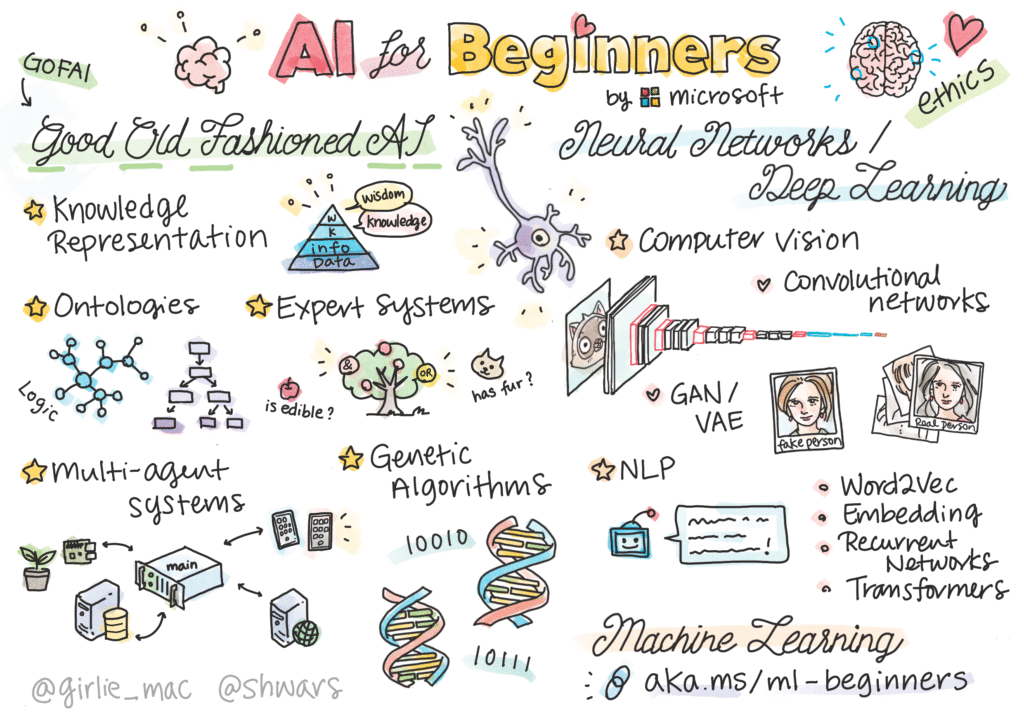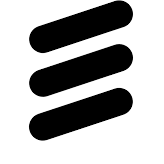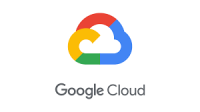Introduction
This article outlines the “AI For Beginners” curriculum: a 12-week, 24-lesson, beginner-friendly program that blends foundational concepts and hands-on labs. You will explore different approaches to Artificial Intelligence — from the symbolic “GOFAI” style to modern Deep Learning — and learn to run example code in TensorFlow and PyTorch while following setup and repository instructions.
What the Curriculum Teaches: core approaches and practical tools
This curriculum covers multiple, complementary approaches to Artificial Intelligence so beginners gain a broad, yet focused foundation:
- Symbolic AI (GOFAI) — the “good old” approach emphasizing Knowledge Representation and reasoning. The curriculum explains core ideas and situates GOFAI among other paradigms.
- Neural Networks and Deep Learning — described as the core of modern AI, with concrete, executable examples. Hands-on lessons include code written for both TensorFlow and PyTorch, enabling learners to compare implementations and run models themselves.
- Neural Architectures for images and text — a focused treatment of architectures used to work with visual and textual data. The curriculum highlights recent models and shows how they apply to computer vision and natural language processing tasks.
- Less popular approaches — complementary techniques such as Genetic Algorithms and Multi-Agent Systems are included to broaden perspectives beyond mainstream deep learning.
These topics are presented through practical lessons, quizzes, and labs so learners can immediately apply concepts and validate understanding.
Practical setup: repository, environment and how to start
To begin the hands-on portion, follow the repository workflow provided with the curriculum:
- Fork the Repository — create your own copy to experiment safely and track changes.
- Clone the Repository — run: git clone https://github.com/microsoft/AI-For-Beginners.git to obtain the materials locally.
- Setup the development environment — follow the provided instructions inside the repository to install dependencies and configure your workspace for the TensorFlow and PyTorch examples and lab exercises.
The materials are designed so that the repository contains lessons and labs ready for immediate exploration after setup, enabling practical experimentation with code and concepts described in the curriculum.
Course structure, audience, scope and support
The curriculum is organized for newcomers: it spans 12 weeks across 24 lessons and emphasizes hands-on learning with practical labs and quizzes. It also incorporates AI ethics and offers multi-language support, making the material accessible to a diverse audience.
- Target audience — beginners who want a practical, hands-on learning experience covering foundational AI concepts, neural networks, computer vision, natural language processing, other AI techniques, and AI ethics.
- Included elements — practical lessons, quizzes, labs, TensorFlow and PyTorch code examples, and community engagement opportunities.
- Excluded topics — the curriculum deliberately does not include business cases of AI, classic Machine Learning, practical AI with Cognitive Services, specific Cloud Frameworks, Conversational AI/chat bots, or the deep mathematics behind deep learning.
- Authorship and contributors — Primary Author: Dmitry Soshnikov, PhD; Editor: Jen Looper, PhD; Sketchnote illustrator: Tomomi Imura; Quiz Creator: Lateefah Bello; Core Contributors: Evgenii Pishchik.
By keeping the scope focused, the curriculum ensures beginners build practical skills without getting sidetracked by advanced mathematics or platform-specific tooling.
How to use the curriculum effectively
Work through lessons sequentially to build concepts progressively: start with symbolic approaches and knowledge representation, then move to neural networks and Deep Learning with TensorFlow and PyTorch code examples, and finally study neural architectures for images and text alongside less common approaches like Genetic Algorithms and Multi-Agent Systems.
- Complete labs and quizzes after each lesson to reinforce learning.
- Use the repository as your practical workspace — fork, clone, and follow the included setup instructions before running examples.
- Engage with multi-language resources and community channels to clarify concepts and share progress.
Following this linear learning path helps ensure concepts do not feel isolated and that each lesson builds on the previous one.
Conclusion
This “AI For Beginners” curriculum offers a structured, practical pathway through core AI paradigms — symbolic GOFAI, Neural Networks and Deep Learning with TensorFlow and PyTorch, neural architectures for images and text, and less mainstream techniques like Genetic Algorithms and Multi-Agent Systems. Fork and clone the repository, set up your environment using provided instructions, and follow the 12-week, 24-lesson plan with labs and quizzes to build solid, hands-on AI fundamentals.











